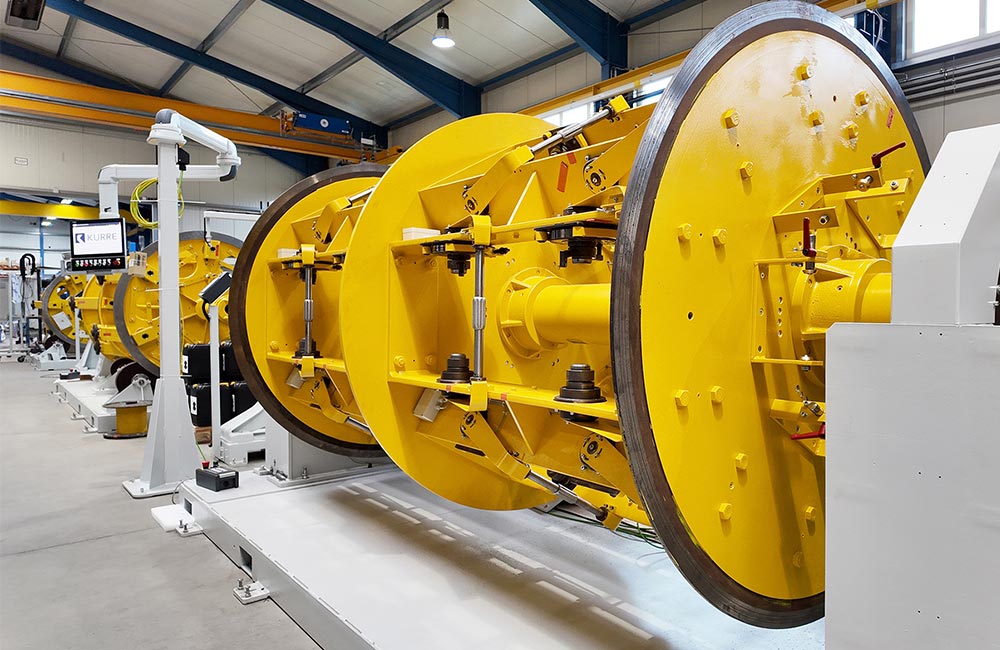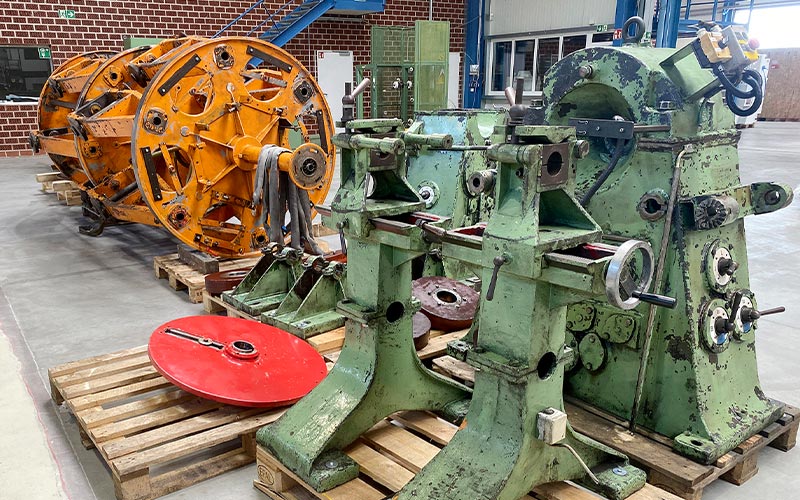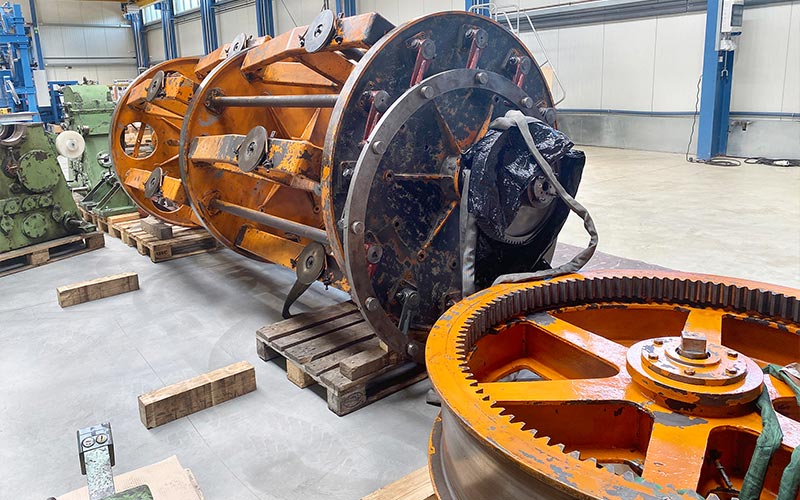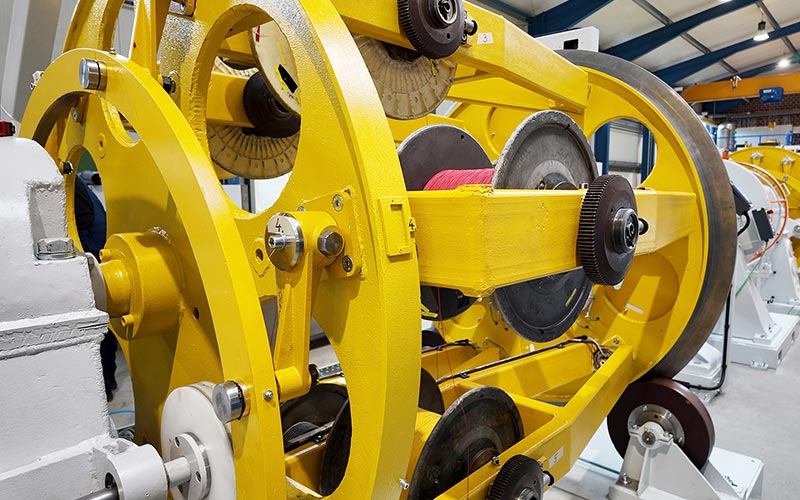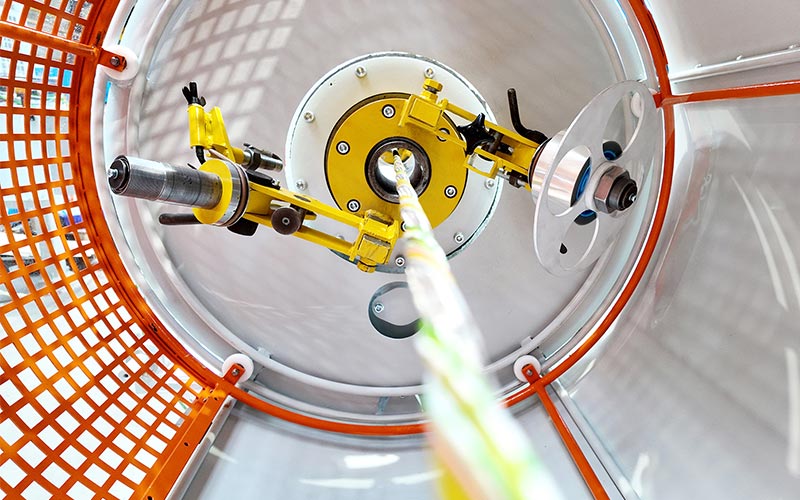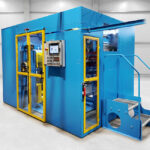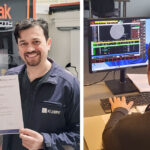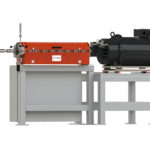Extensive modernization of an outdated stranding machine
Some challenges have to be accepted in order to grow from them. With this in mind, a more than 60-year-old basket stranding machine was modernized and has now been handed over by the German company KURRE Systems to its customer.
“The machine has grown to its current size over decades. The oldest parts date back to the 1930s,” ex-plains KURRE project manager Andre Kamp. “To prevent failures and related downtimes and to enable increased profitability, our customer opted for a retrofit.” But only one company accepted the challenge of bringing the stranding machine—consisting of a total of three massive baskets and three taping units—up to modern standards: KURRE Systems.
Cost-benefit calculation
Economical, efficient, and sustainable – retrofit projects often offer convincing arguments even in the planning phase. “Through thorough on-site inspections, we can identify the modernization potential early on,” Kamp explains. “The combination of lower operating costs and an active contribution to environmen-tal protection makes a retrofit a future-proof solution.”
The groundwork
An initial challenge was the disassembly and cleaning of the heavy-tonnage machine and its many individ-ual components at KURRE’s facility. While a large portion of the mechanical components could be reused after thorough technical inspection and reconditioning, most of the electronic components had to be replaced to bring the machine up to current technical standards.
“As part of the retrofit, it was also necessary to completely replace and newly manufacture various me-chanical machine components. Since these were mostly custom-made parts, we were able to rely on the extensive expertise of our in-house metalworking department KUTEC – Kurre Technologies. Thanks to this in-house expertise, all parts were manufactured precisely according to the latest technical specifications and integrated seamlessly into the existing system,” Kamp explains.
Retrofit and commissioning
“Especially in the areas of control and safety, numerous functions were added,” reports Kamp. Previously, the system only had a simple control panel. For a more user-friendly and intuitive operation, a completely new visualization was designed and implemented.
To increase system safety, robust protective fencing was installed and a break monitoring system was set up. “The new break monitoring system in particular significantly enhances process reliability,” emphasizes Kamp. Additionally, individual parameters of the system can now be accessed and controlled via IWLAN. This not only reduces wear and maintenance costs but also increases reliability.
“However, commissioning was a particular challenge,” Kamp continues, “since we had no existing pro-grams to work with. The synchronization process in particular really pushed our commissioning team to the limit.” For perfect synchronization, all parameters—from line speed, conductivity, and basket lay length to the tape pitch of the taping units and the group lay length including ramp function—must be precisely coordinated.
A lot learned
“In general, a retrofit always surprises you with new challenges throughout the process, which have to be met with flexibility and confidence. This was also the case with this stranding machine. Thanks to our dec-ades of experience and the many experts in our company, we were able to complete the project to the full satisfaction of the customer. We grew through this task and gained valuable specialized knowledge that will enable us to successfully implement future projects,” Kamp concludes.
We will be happy to provide you with further information on systems, machines and efficient special solutions > KURRE contact


